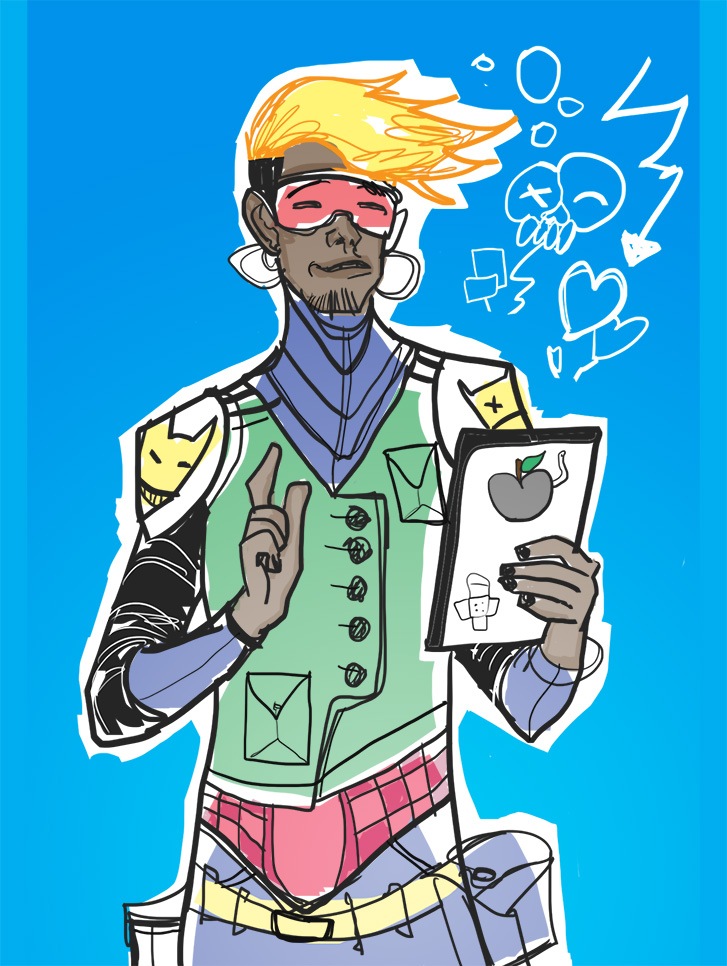
By Mars Dorian, {grow} Contributing Columnist
As an online creative who writes and draws for a living, I soak up any creative entertainment news involving comics, video games, novels, and multimedia franchising. It’s a vibrant industry with ever-shifting business models.
No matter which industry you work in, it’s valuable to learn from other markets and get fresh input.
I want to show you the marketing and business lessons I’ve learned recently from crowdfunding book creators, modern comic publishers, and Czech indie video game companies.
1) Offer your customers a (paid) look behind-the-scenes
Today it’s easier than ever to connect with your fans and customers. It’s also easier to include them in your creative process. In the creative industries, fans not only want to buy the products but they’re also interested in how they are crafted.
Ksenia Anske runs an ongoing Patreon campaign where her readers learn her plotting and storytelling process in video and monthly video sessions. The backers not only pay for her novels but also pay for the insight on how they’re produced.
A small but dedicated segment of the customer base is always interested in becoming a creator themselves.
Remember, almost every creator in the creative industries was once a hardcore fan.
A Czech game studio launched a successful Kickstarter campaign to fund their realistic medieval game and even sold their long production cycle as a digital documentary on Steam, an online marketplace for games.
It’s the brand advertisement that pays you.
So what are the main advantages of showing your fans behind-the-scenes?
- It connects your customer closer to your brand which trumps creating artificial advertisements with PR spins that can feel manipulative.
- It can open a second major revenue stream where you teach dedicated fans skills they’re madly passionate about.
2) Every connection is an opportunity to build loyalty
Blake Northcott, a Canadian novel and comic book author launched the most successful fiction book crowdfunding campaign of 2018.
When she was shipping the premium prints of her crowdfunded novel to her backers, the Canadian post office lost some of them in the delivery process.
Worse, some people seemed to steal the delivered book packages which meant the backers never got their books.
Blake re-sent these books and paid for them herself, losing money, even though she was neither responsible for the post’s failures nor the stolen packages.

That may sound like no big deal, but if you’re shipping big hardcover books all over the world, you’re quickly in the $30-$40 cost range per package.
Nevertheless, fans and backers tweeted how grateful they are for Blake’s commitment. And judging by the Amazon bestseller launch of her crowdfunded novel and her fan engagement on Twitter, she’s doing pretty well.
By putting the fans first, even at the expense of your bank account, you show commitment to the audience that builds an actionable audience.
3) It’s not an artwork, it’s a money making platform
After listening to 40+ comic creator podcasts, I’ve learned professionals and even publishers admitting that there’s no money in selling comics.
Back in my early days in the 90s, a 22-page comic issue would cost around two dollars. Now they cost around $2.99 to $4.99, they are more expensive to produce and sell fewer units. But to produce a comic book, you need to pay the artist, the writer, the letterer, the colorist, and the editors involved.
Publishers actually lose money with many of their series.
So why are comic publishers releasing more comic series than ever? Heck, why are even new comic publishers emerging in this ultra-competitive marketplace?
Because the business goals have shifted. Today, comics are loss-leaders for other business models.
The goal is to build an IP (intellectual property) for a multimedia franchise, selling licenses for merchandise, movie, TV/streaming productions and even a game series.
A comic is basically an expensively produced blueprint that acts as the foundation of the potential media empire. A fancy screenplay for the actual production.
An example: An obscure zombie comic started out as a creator-owned black and white series published in the early 2000s. Since then, the little project has spawned a popular video game series, merchandise, spin-offs and one of the most popular TV series of all time, “The Walking Dead”, now nearing its 10th season.
While success like that can’t be guaranteed, the comic creators did plan to build a multimedia franchise right from the start. They built a platform, not just a creative effort.
What marketing or business lesson have you learned from the creative entertainment industry?
 Mars Dorian is an illustrating designer and storyteller. He crafts words and pictures that help clients stand out online and reach their customers. You can find his homebase at www.marsdorian.com and connect with him on Twitter @marsdorian.
Mars Dorian is an illustrating designer and storyteller. He crafts words and pictures that help clients stand out online and reach their customers. You can find his homebase at www.marsdorian.com and connect with him on Twitter @marsdorian.


